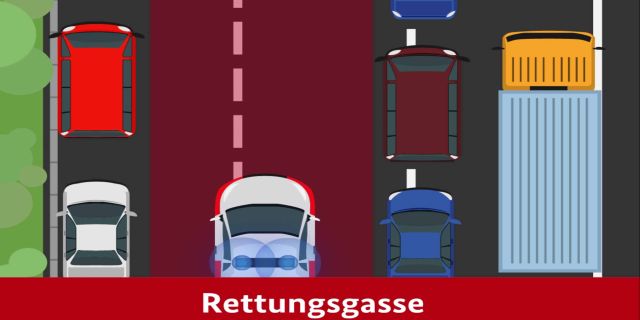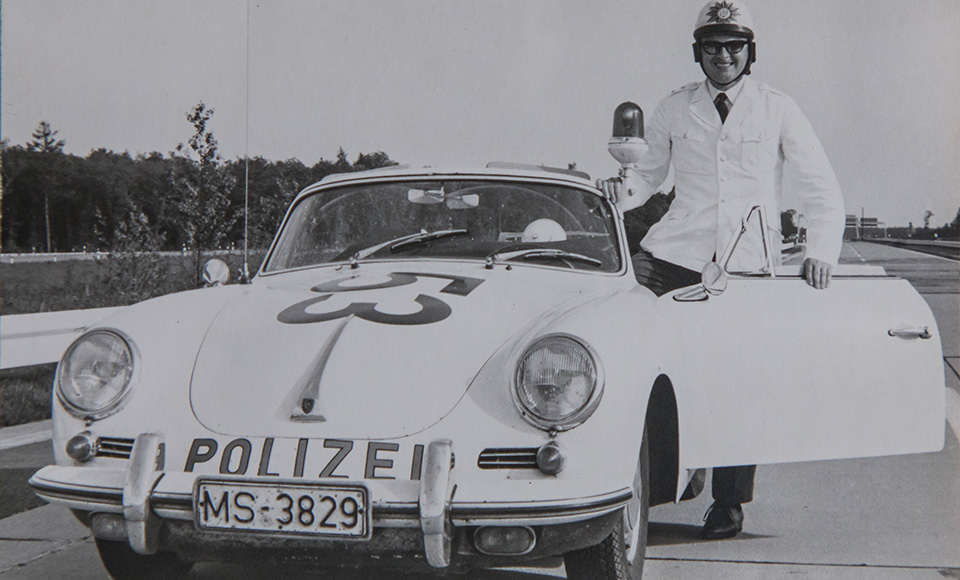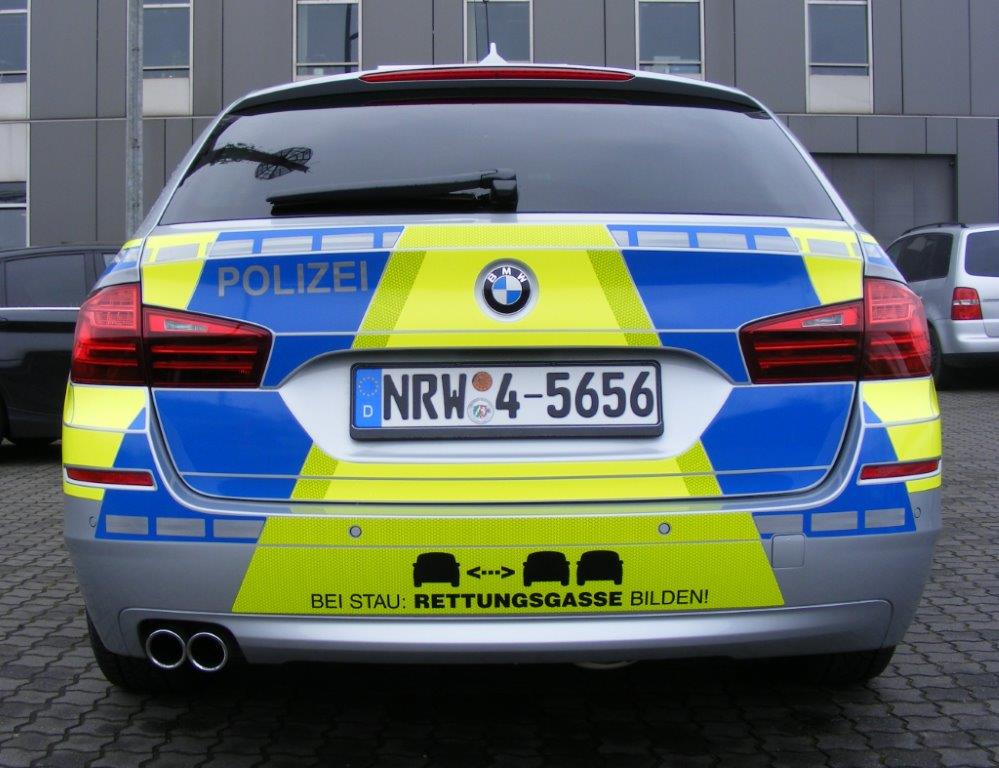Problems occur time and again because road users do not form an emergency lane. Or even use the resulting emergency lane to drive faster. In doing so, they make it impossible for the following emergency services to pass. This is a nerve-wracking test of patience for the emergency services on the way to the scene. More importantly, rescue lanes save lives.
This is why it is important to always form a rescue lane in good time in traffic jams or gridlocked traffic on freeways and multi-lane roads outside built-up areas.
The emergency lane should be formed as soon as you approach the end of the traffic jam - and this applies to every traffic jam!
This is the only way to enable rescue and emergency services to reach the scene of an accident as quickly as possible and provide assistance. Every second counts! A rescue lane must not be closed again even after the first emergency vehicle has passed. Other emergency vehicles could follow. In traffic jams, vehicle occupants should remain in their vehicle and not enter the roadway carelessly.
An amendment to Section 11 (2) of the German Road Traffic Regulations (StVO) came into force on December 14, 2016. The regulations on forming a rescue lane are unambiguous:
Where must a rescue lane be formed?
Rescue lanes are mandatory on federal highways and extra-urban roads with at least two lanes.
When must a rescue lane be formed?
The rescue lane is already formed when traffic is at a standstill.
How to form a rescue lane?
The rescue lane is always formed between the leftmost lane and the lane immediately to the right. The principle is very easy to remember with your right hand: The gap between your thumb and index finger is the emergency lane.
The hard shoulder or emergency lane is not a suitable substitute for an emergency lane.
Every second that emergency services from the fire department, rescue services and police take longer to get to the scene can cost lives. Anyone who violates the regulation on forming a rescue lane must expect a fine of at least 200 euros and two points in Flensburg. In special cases, violations can result in a fine of up to 320 euros, two points and a month's driving ban or even a criminal charge and the revocation of a driver's license.
Since 2020, drivers who drive through the emergency lane or who tailgate emergency vehicles in order to make faster progress must pay at least 240 euros and receive two points in the central traffic register as well as a month's driving ban.



